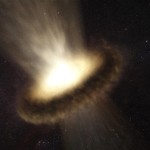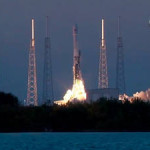Mysterious Space Object to Hit Earth November 13
Scientists have found a large space object headed on a collision course with Earth to impact on November 13, 2015.
Discovered in October of 2015, a 1 to 2 meter long hollow object is hurling towards the Earth set to hit 65 km south of Sri Lanka in the Indian Ocean.
It will probably burn up in the atmosphere but leading astronomers say this is a rare chance to learn about space junk and how it acts in our solar system.
It is possible it is debris decades old from some of the first space missions ever launched on Earth.
Though it is possible, but highly unlikely to be from another unknown source, but the astronomers say, it appears to be hollow and most likely artificially made.
Space debris, also known as orbital debris, space junk and space waste, is the collection of manmade defunct objects in orbit around Earth. This includes spent rocket stages, old satellites and fragments from disintegration, erosion and collisions. Since orbits overlap with new spacecraft, debris may collide with operational spacecraft.
As of 2009 about 19,000 pieces of debris larger than 5 cm (2 in) are tracked, while an estimated 300,000 pieces larger than 1 cm exist below 2,000 kilometres (1,200 mi). For comparison, the International Space Station orbits in the 300–400 kilometres (190–250 mi) range and the 2009 satellite collision and 2007 antisat test events occurred at from 800 to 900 kilometres (500 to 560 mi).
Most space debris is smaller than 1 cm (0.4 in), including dust from solid rocket motors, surface-degradation products (such as paint flakes) and frozen coolant droplets released from RORSAT nuclear-powered satellites. Impacts by these particles cause erosive damage, similar to sandblasting, which can be reduced by the addition of ballistic shielding (such as a Whipple shield, used to protect parts of the International Space Station) to a spacecraft. Not all parts of a spacecraft can be protected in this manner; solar panels and optical devices such as telescopes or star trackers are subject to constant wear from debris and micrometeoroids. Below 2,000 kilometres (1,200 mi), the flux from space debris is greater than that from meteoroids. Decreasing risk from space debris larger than 10 cm (4 in) is often obtained by maneuvering a spacecraft to avoid a collision. If a collision occurs, the resulting fragments can become an additional collision risk.






